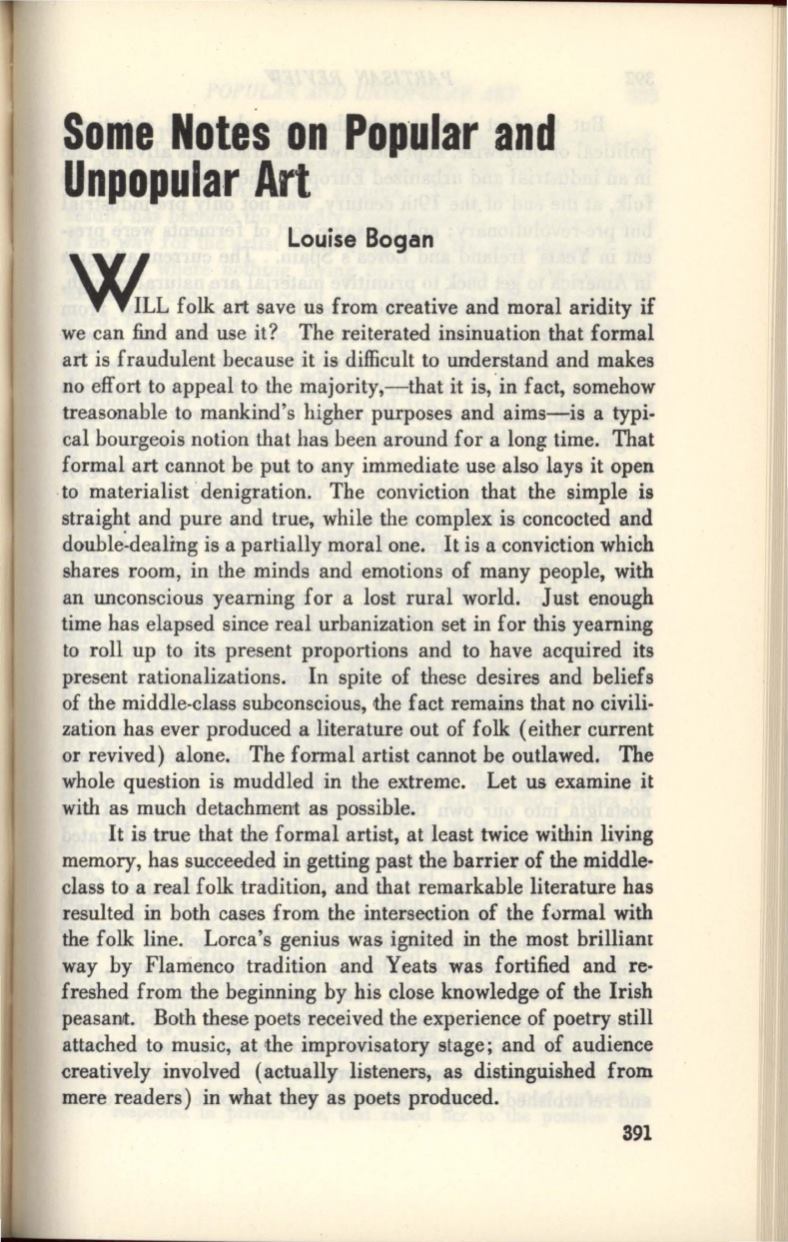
Some Notes on Popular and
Unpopula.r Art
Louise Bogan
Wu
folk art save us from creative and moral aridity
if
we can find and use it? The reiterated insinuation that formal
art is fraudulent because it is difficult to understand and makes
no effort to appeal to the majority,-that it is, .in fact, somehow
treasonable to mankind's higher purposes and aims-is a typi–
cal bourgeois notion that has been around for a long time. That
formal art cannot be put to any immediate use also lays it open
to materialist ·denigration. The conviction that the simple is
straight and pure and true, while the complex is concocted and
double~dealing
is a partially moral one.
It
is a conviction which
shares room, in the minds and emotions of many people, with
an unconscious yearning for a lost rural world. Just enough
time has elapsed since real urbanization set in for this yearning
to roll up to its present proportions and to have acquired its
present rationalizations. In spite of these desires and beliefs
of the middle-class subconscious, the fact remains that no civili–
zation has ever produced a literature out of folk (either current
or revived) alone. The formal artist cannot be outlawed. The
whole question is muddled in the extreme. Let us examine it
with as much detachment as possible.
It is true that the formal artist, at least twice within living
memory, has succeeded in getting past the barrier of the middle–
class to a real folk tradition, and that remarkable literature has
resulted in both cases from the intersection of the furmal with
the folk line. Lorca's genius was ignited in the most brilliant
way by Flamenco tradition and Yeats was fortified and re·
freshed from the beginning by his close knowledge of the Irish
peasant. Both these poets received the experience of poetry still
attached to music, at the improvisatory stage; and of audience
creatively involved (actually listeners, as distinguished frorn
mere readers) in what they as poets produced.
391


